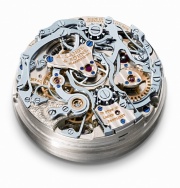Portal:Movements
|
The Portal Movements gives an overview of the Movements pages in Watch Wiki. New authors, who would like to help us with the extension of our data collection, are cordially welcome. Everything that is needed for helping you can find in the authors assistance Movements. | |
Which movement is ticking in my watch?
|
About watch movementsA movement essentially consists of the function groups drive, train and escapement.
Further function groups are the winding mechanism, the motion work and the pointer servo unit.
Je nach Zusatzfunktion des Werkes bzw. der Uhr sind im Uhrwerk weitere Funktionsgruppen integriert. Dazu gehören u.a.:
|
